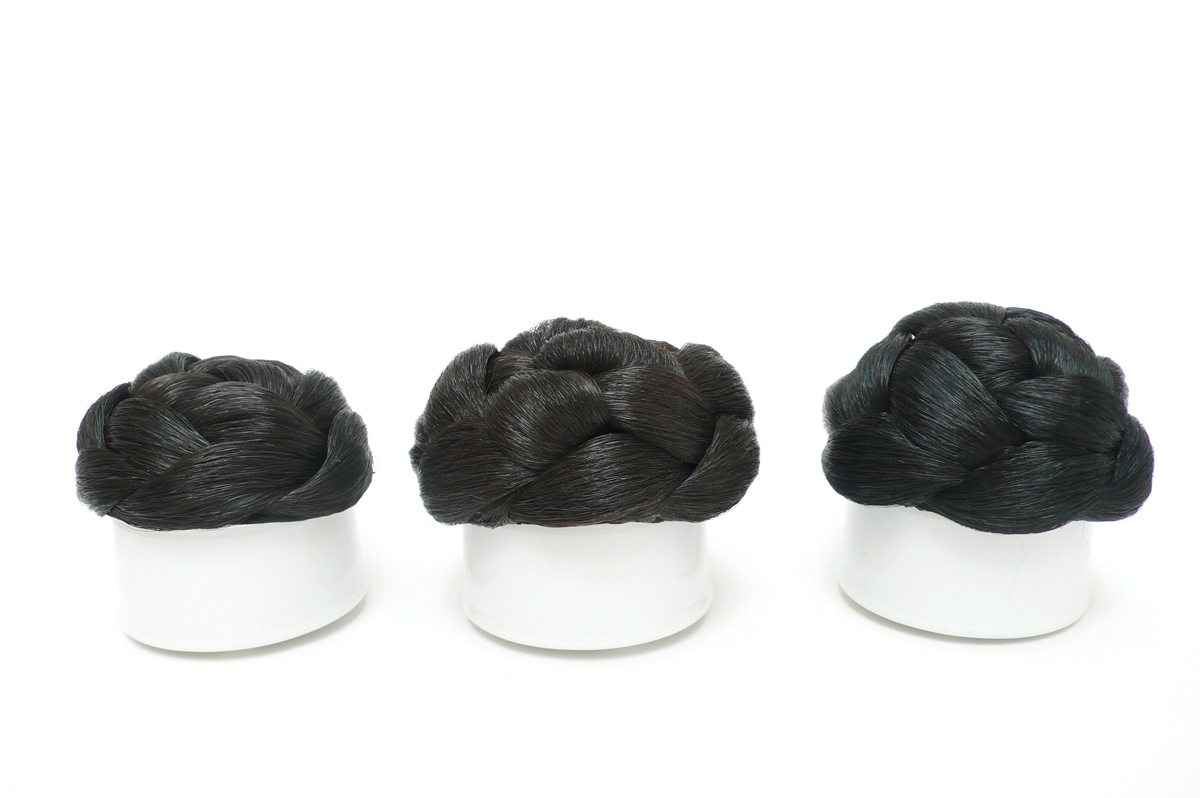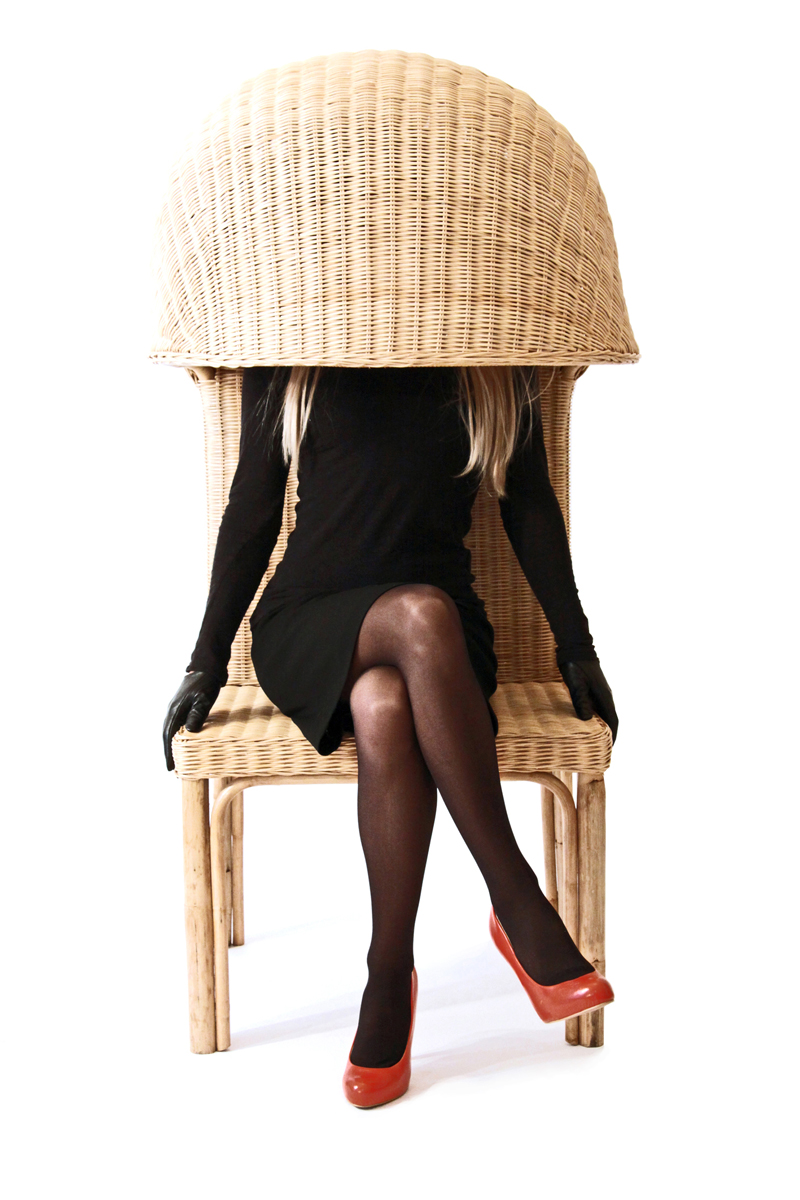
“BUN BOX,” (2011). PORCELAIN AND HAIR. APPROXIMATELY 12 X 8 CENTIMETERS. COURTESY THE ARTIST.

“EMMANUELLE IS SHY,” (2008). RATTAN. 140 X 60 X 60 CENTIMETERS. COURTESY THE ARTIST. PHOTO: THOMAS LAGACHE AND ÉMILIE VOIRIN.
[](#)[](#)
Émilie Voirin
I’ll Take My Vermicelli With A Side Of Yahweh
Recently, Émilie Voirin has been talking to a priest about her art.
The London-based artist and product designer considers the meetings—at a nearby church in South Kensington—to be research. Her work is empirical and curious; it neither brays angrily at religion nor restrains itself in fear of the church’s power. For Voirin, deconstruction is not a means to shatter beliefs or impugn the religious. Yet it does dismiss one important component of Catholicism: blind faith.
Voirin once invited a friend to represent the Virgin Mary in a photo series. Her reproduction of Michelangelo’s famous “Pietà” sculpture, via a series of videos, calls into question the art object’s physical feasibility. Her minimalist nativity scene strips the well-known display of its Anglo biases and reduces its characters to faceless blocks.
“I bring more explanation than criticism,” she says in a Skype conversation. “I think I stand right at the limit of being offensive. I am seeing the historical parts and the aesthetic parts of what—to me, as a non-believer—is the biggest fiction.”
Despite rejecting Catholicism’s teachings—Voirin asked to be removed from her primary school’s religious classes when she was eight—she remains fascinated by churches and religious art.
In “Performing Pieta,” an interdisciplinary exploration of famous Catholic iconography, Voirin attempted to recreate Michelangelo’s “Pietà,” which depicts Jesus lying in his mother’s lap. The sculpture, built in 1499, is the kind of piece one would make a pilgrimage to experience. In terms of craftsmanship, the figures are so delicate and Mary’s fabric appears so supple it can be difficult to believe it is crafted from marble. Emotionally, the statue is deeply tragic: Jesus limply draped across his mother’s lap, wounds from crucifixion etched into his body.
Voirin’s series brings age, scale, and physics into question. To test whether Mary really could hold a full-grown man like Jesus, expression unperturbed, she hired actors to attempt to do the same. Even the strongest women quivered; at least their faces betrayed effort.
But in some ways, Voirin’s back-to-basics approach might be more biblical than the religious work inspired by Catholic Church. Exodus 20:4 states, “You shall not make for yourself an idol, or any likeness of what is in heaven above or on earth beneath or in the water under the earth.” In other words: no making God.
And yet for centuries, humans have been creating works of art based on what we imagine the heavens, God, Jesus, and miracles to be. And usually, those portrayals are less dedicated to accuracy than satisfying cultural expectations. Voirin’s nativity scene, however—a set of blocks individually and uniformly marked with the manger attendees (JESUS, SHEEP, DONKEY)—removes the human impulse to cast features and race onto religious icons.
“I want to modernize religious objects and I want to keep the essentials, so how do I materialize the story? Only the names are left,” she says. “It’s also a way to remove race…you can decide if your baby Jesus will be blond or if he will be black.”
Voirin’s religious works have—despite their patently secular intention—been featured within the hallowed walls of Catholic churches. In an effort to technologize and reinvigorate traditional _ex-votos_, or small prayer offerings, Voirin invited people of all faiths to share their prayers or wishes, which were broadcast on an LED screen she placed in a nearby church.
But most surprising of all might be Voirin’s hopes for the future: She aspires to be a designer for The Vatican. What would that be like, I ask, for a non-believer to make the very products that promote “the biggest fiction”?
She laughs. “I believe you can design packaging for meatballs even if you are a vegetarian, no?”
